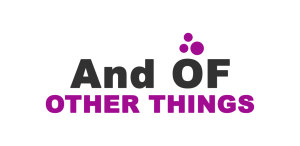In today’s interconnected digital environment, sharing files is a fundamental aspect of business operations. However, the convenience of sharing must never compromise the security of sensitive data. With data breaches becoming more frequent and regulations stricter, selecting a truly robust and secure file share platform is paramount. Not all platforms are created equal, and choosing one based solely on ease of use or cost without scrutinizing its security architecture can lead to disastrous consequences, including data leaks, compliance violations, and reputational damage. This buyer’s guide outlines the essential security features you must look for to ensure your data remains protected.
Layering Protection: Encryption and Authentication Essentials
The first line of defence for any secure file sharing platform lies in its fundamental security layers. Ensure the platform employs strong encryption for data both at rest (when stored on servers) and in transit (while being uploaded or downloaded). This makes data unreadable to unauthorized parties even if intercepted. Beyond encryption, robust authentication is crucial. While passwords are a start, they are often insufficient. Look for platforms offering Two-Factor Authentication (2FA). This requires users to provide two distinct forms of identification (e.g., a password and a code from a mobile app or SMS) before gaining access, significantly reducing the risk of account compromise through stolen or weak passwords.
Controlling Access with Granular Permissions
Once a user is authenticated, the platform needs mechanisms to control exactly what they can access and what they can do. This is where Granular Permissions become indispensable. A top-tier secure file sharing platform allows administrators to set highly specific access levels – view, edit, delete, download, upload, or share – for individual users, groups, or even external collaborators, down to the folder or file level. This prevents accidental oversharing or unauthorized modifications and ensures that users only have the minimum necessary access required for their tasks, adhering to the principle of least privilege.
Accountability and Transparency: The Power of Audit Trails
Even with strong encryption, 2FA, and granular permissions, mishaps or malicious activities can still occur. Knowing who did what, when, and where is vital for security investigations, compliance audits, and troubleshooting. This is where comprehensive Audit Trails shine. A secure platform should automatically log all significant user activities, including logins, file views, downloads, edits, deletions, sharing events, and permission changes. These logs provide a transparent record, allowing administrators to monitor usage, investigate potential security incidents, and demonstrate compliance with industry regulations. A truly secure file share platform prioritizes visibility into data activity.
Beyond the Basics: Other Security Considerations & Conclusion
While encryption, 2FA, granular permissions, and audit trails are non-negotiables, consider other factors like compliance certifications (e.g., SOC 2, ISO 27001, HIPAA, GDPR relevance), secure mobile access, the ability to remotely wipe data from linked devices, and clear data retention and deletion policies. Evaluating potential platforms against these critical security features is not just about protecting data; it’s about building trust, ensuring compliance, and safeguarding your organization’s future. By prioritizing these security capabilities, you can confidently choose a secure file share solution that truly protects your valuable information.





